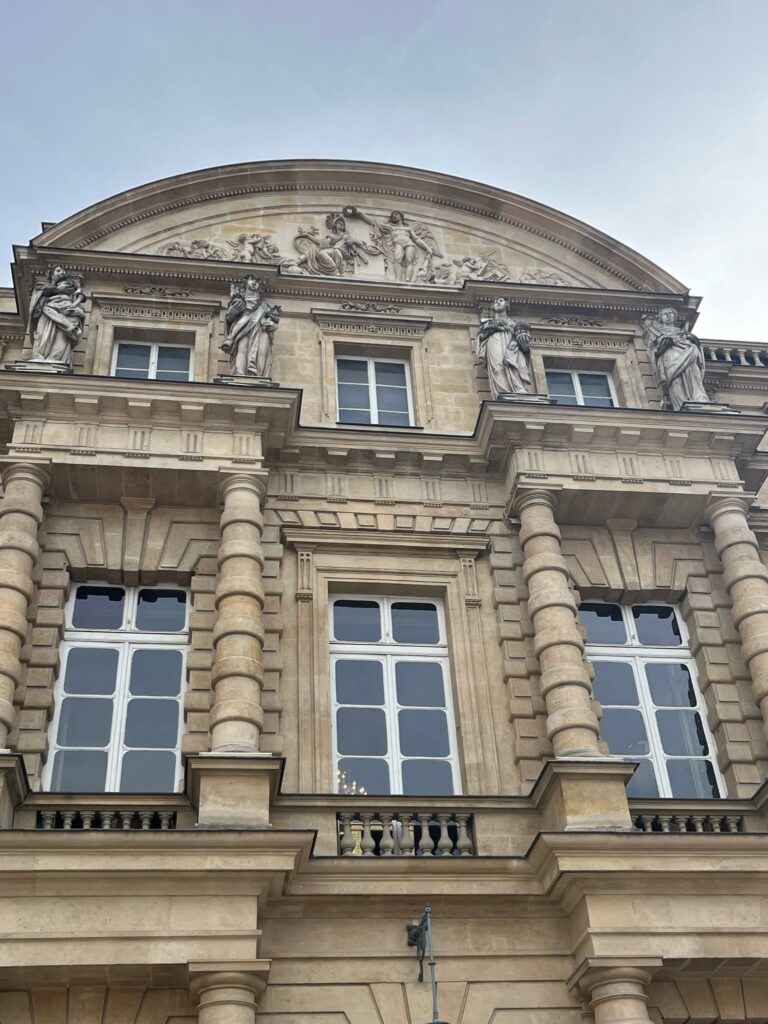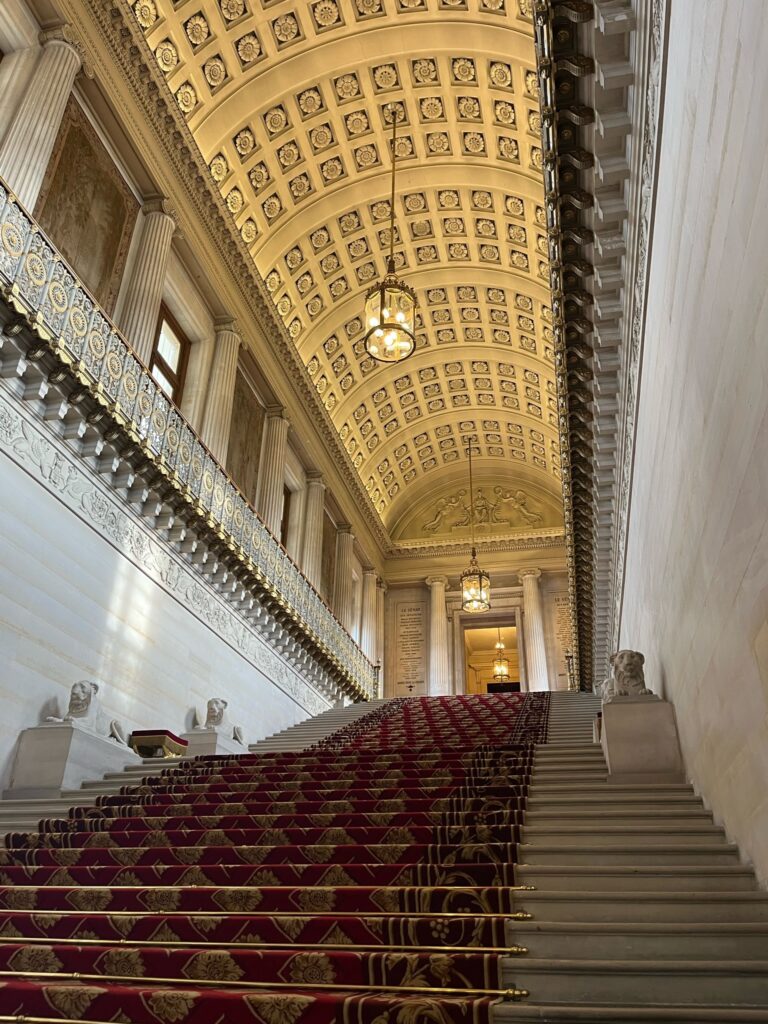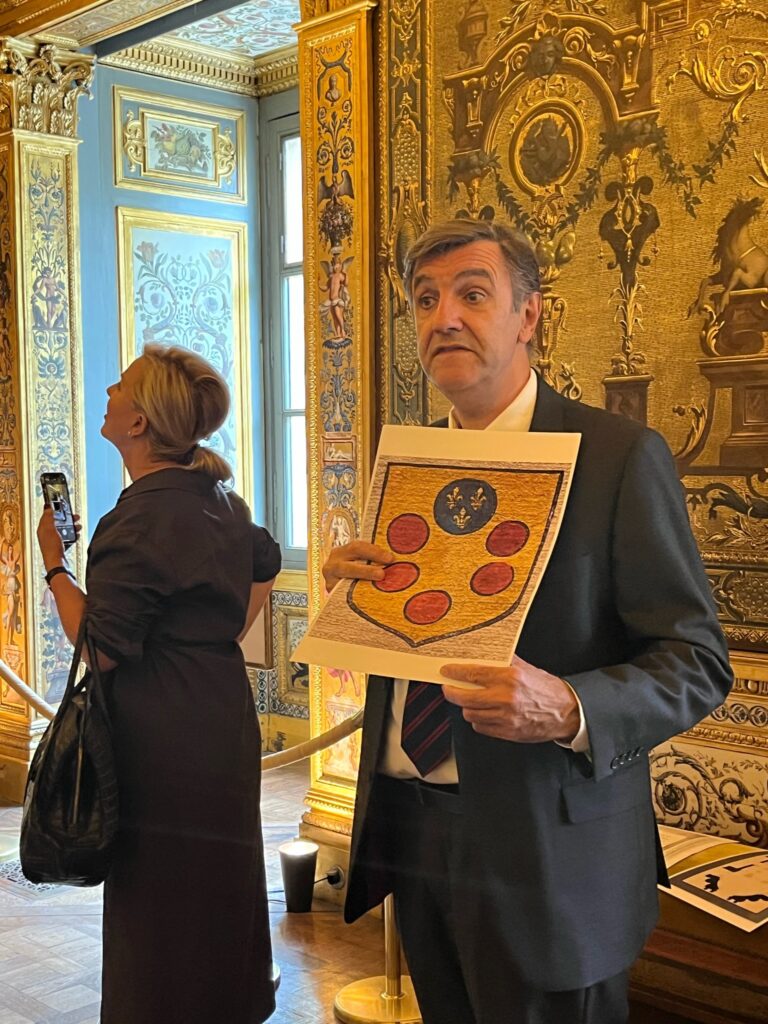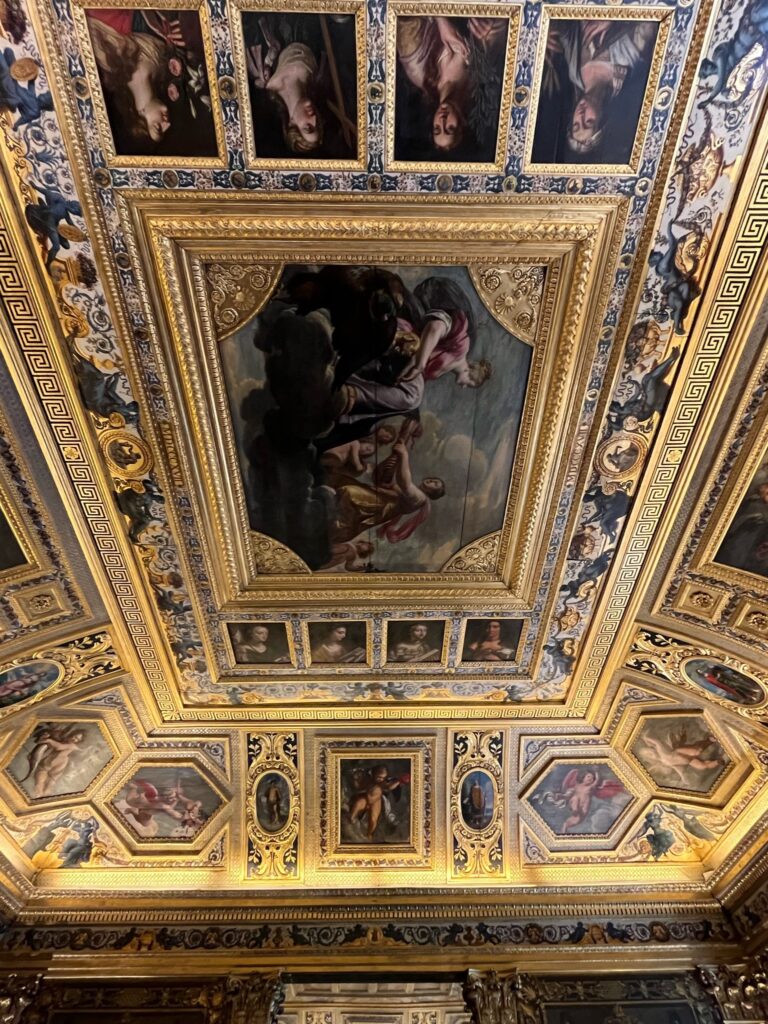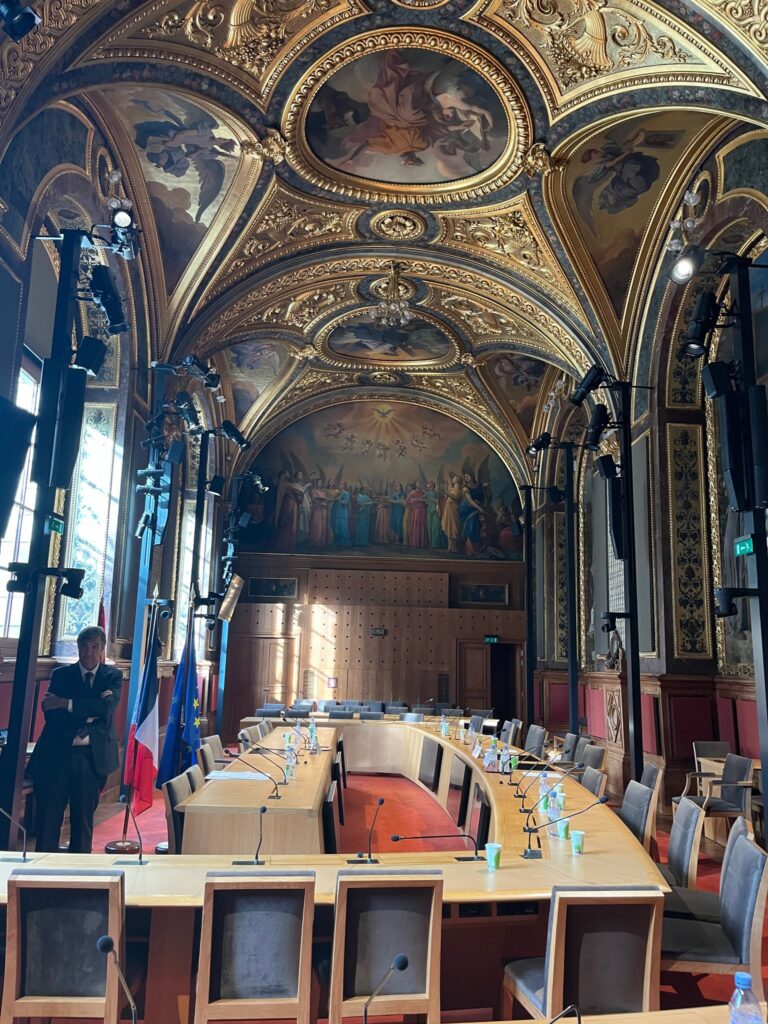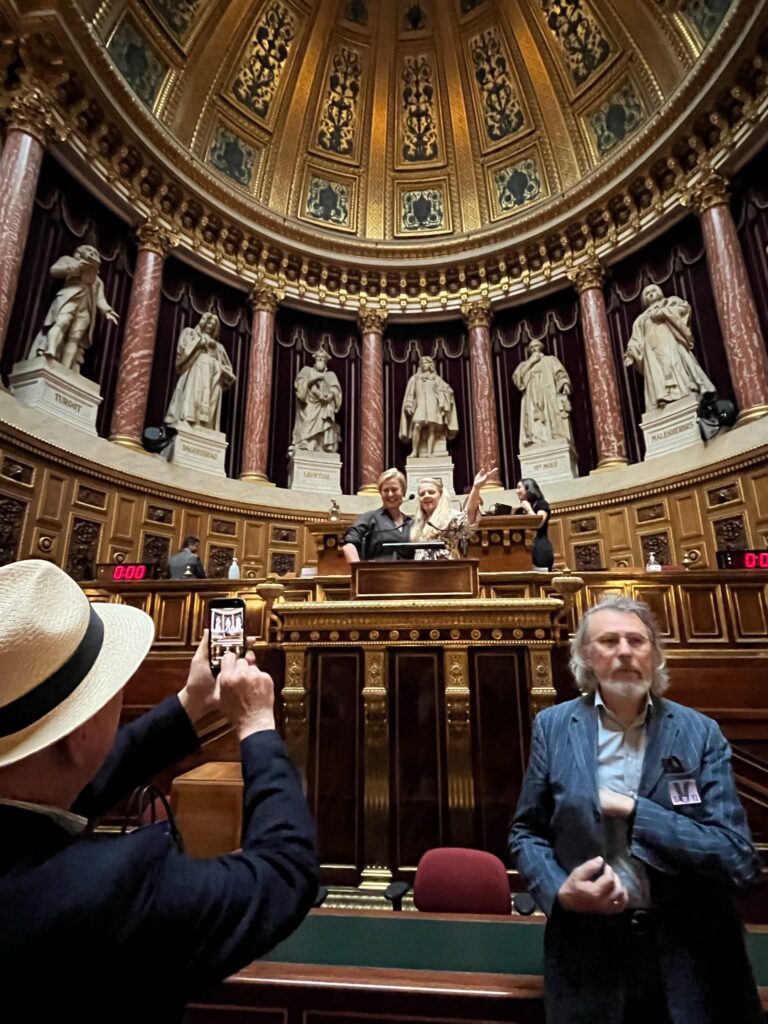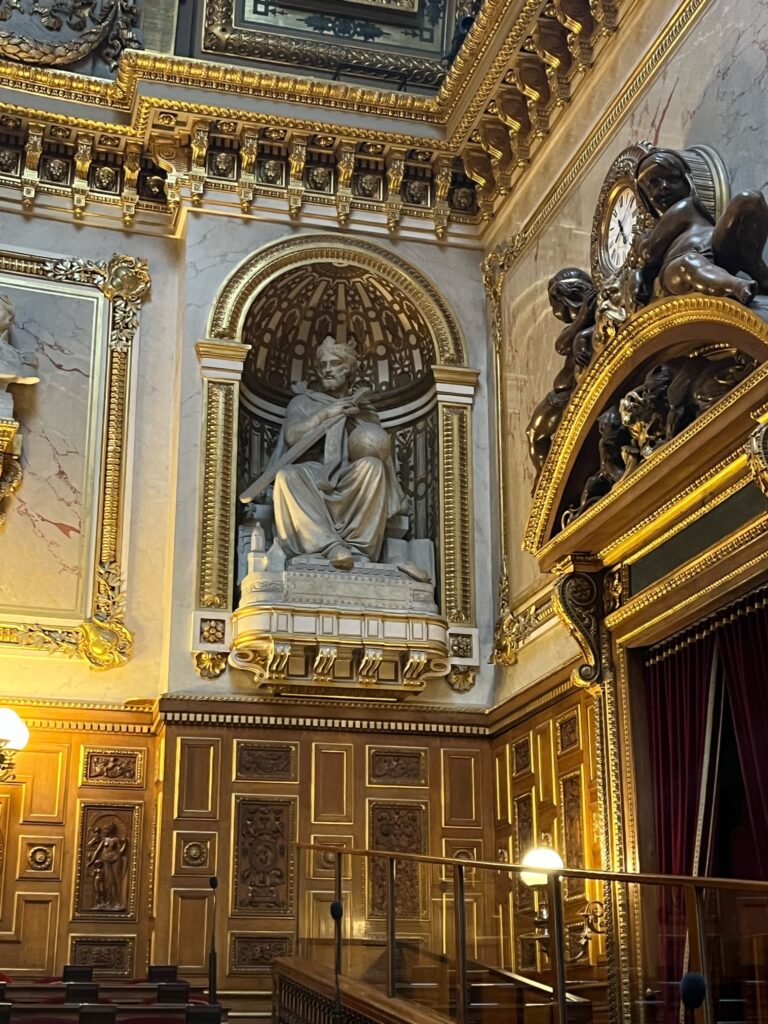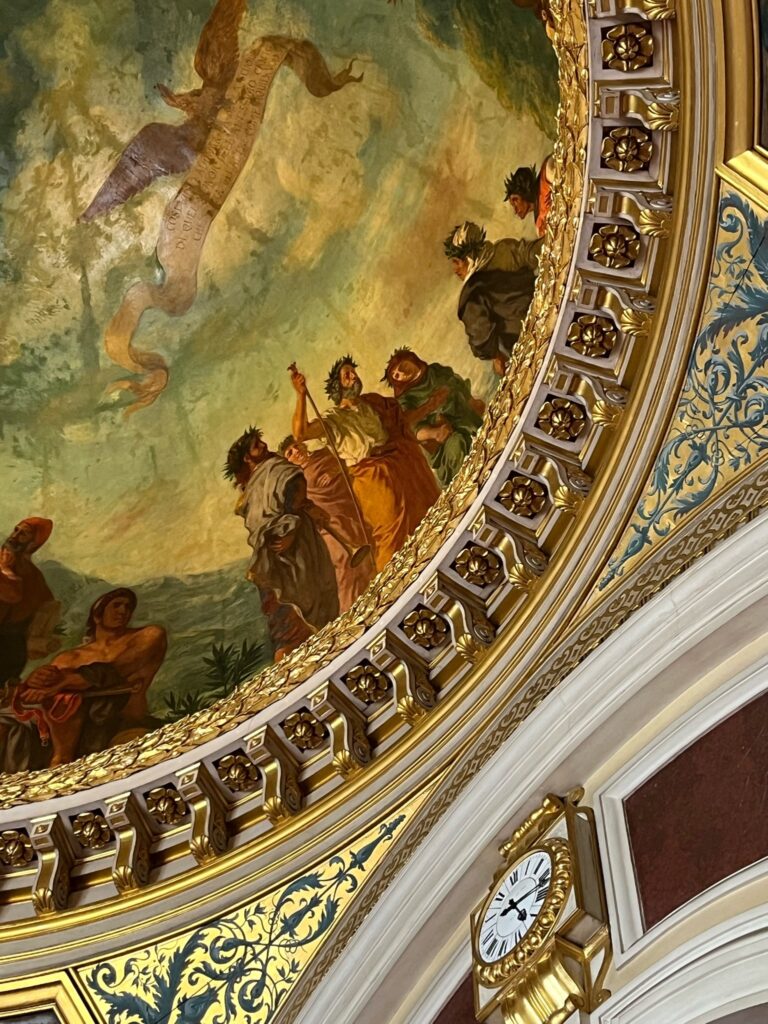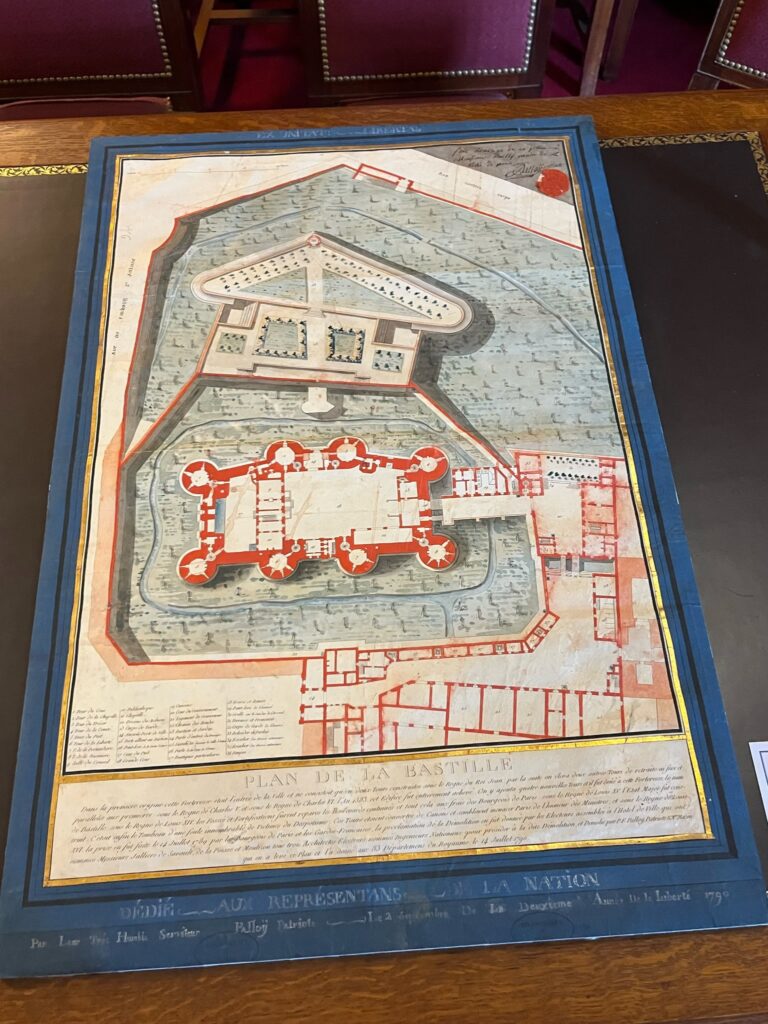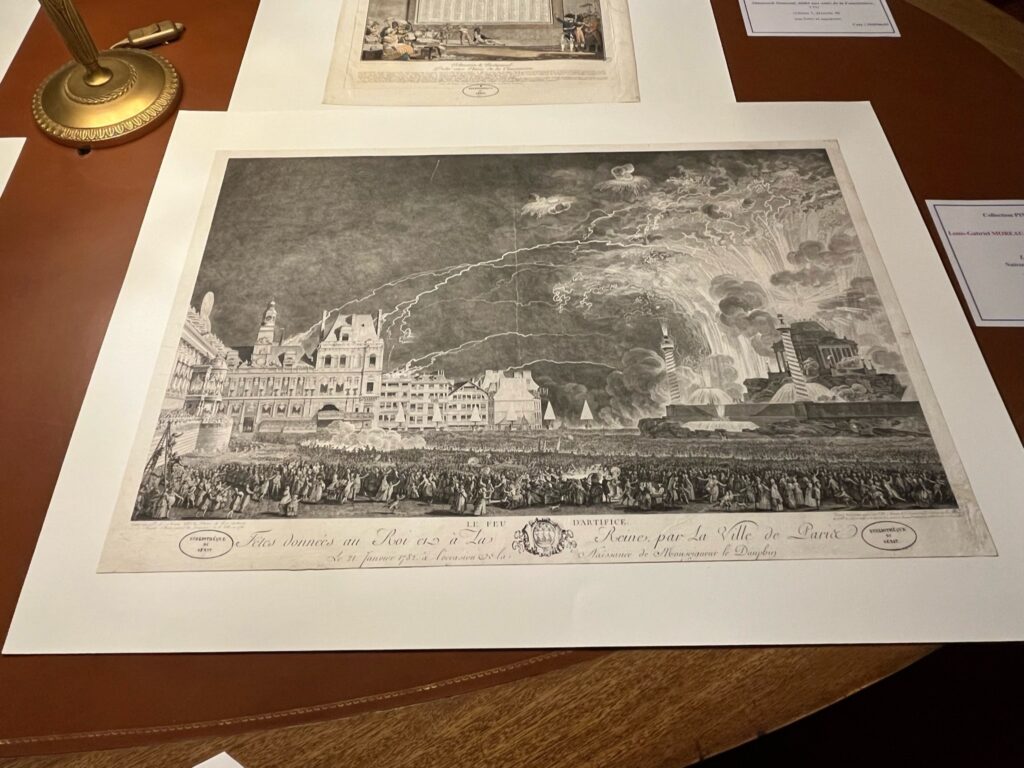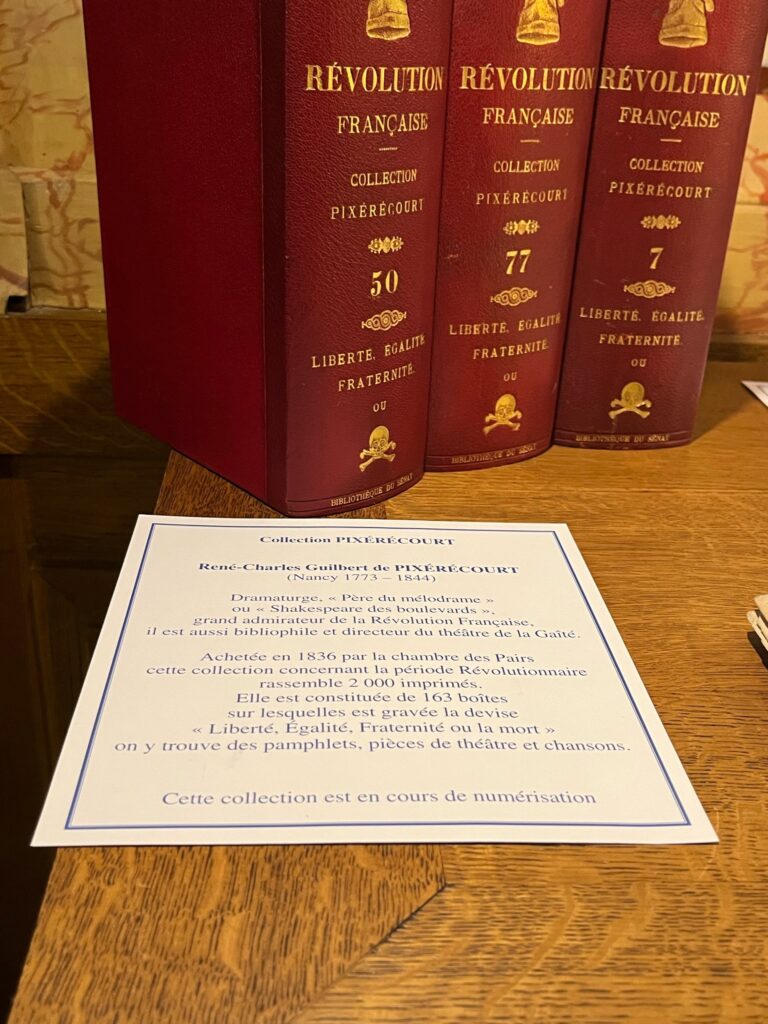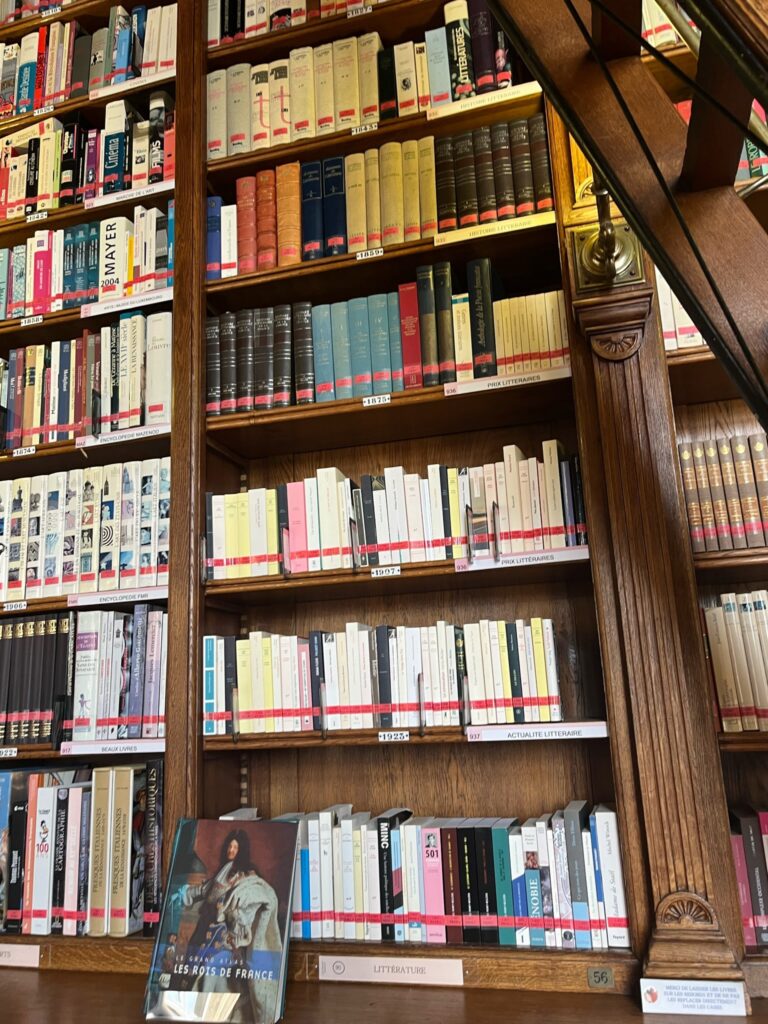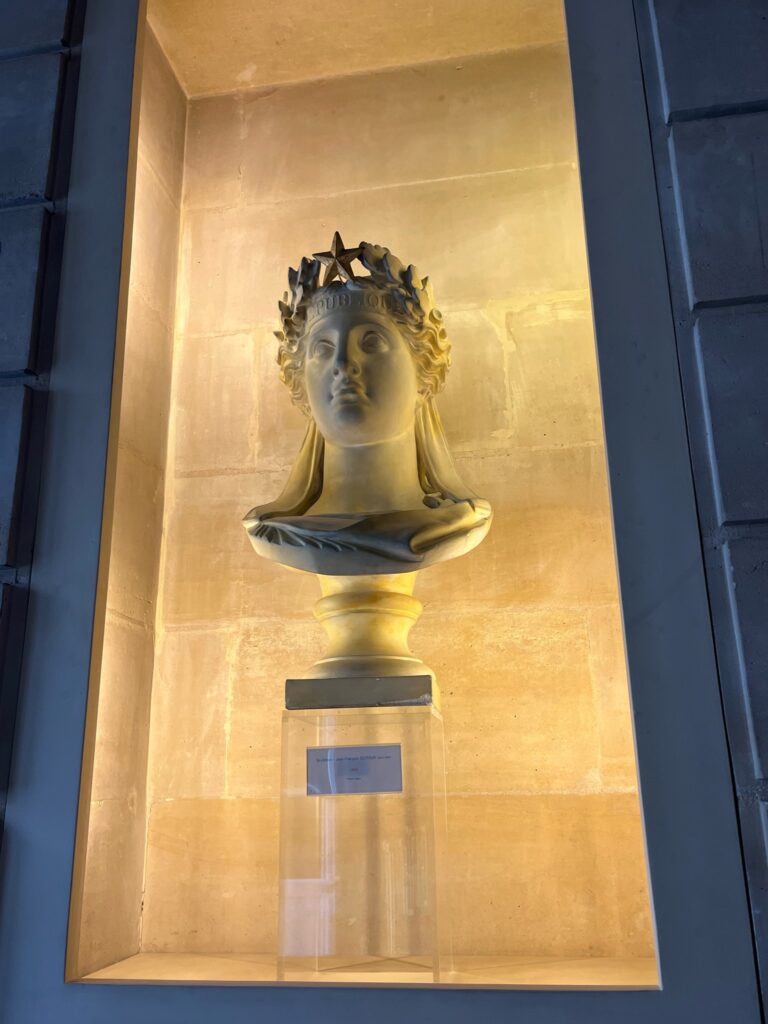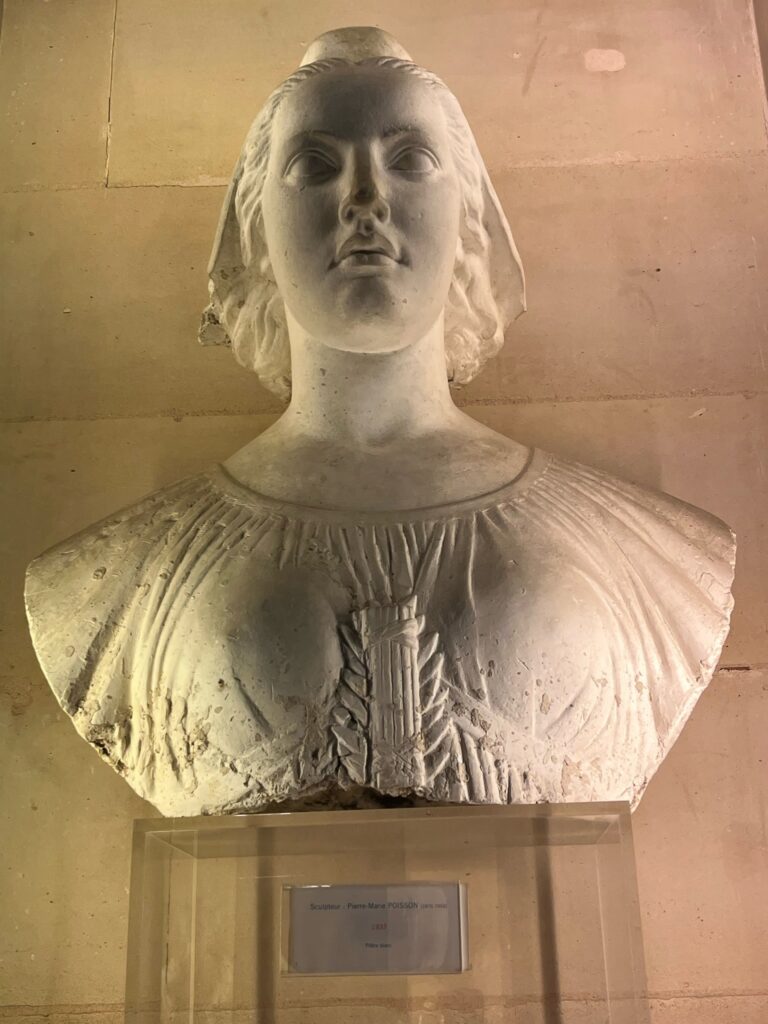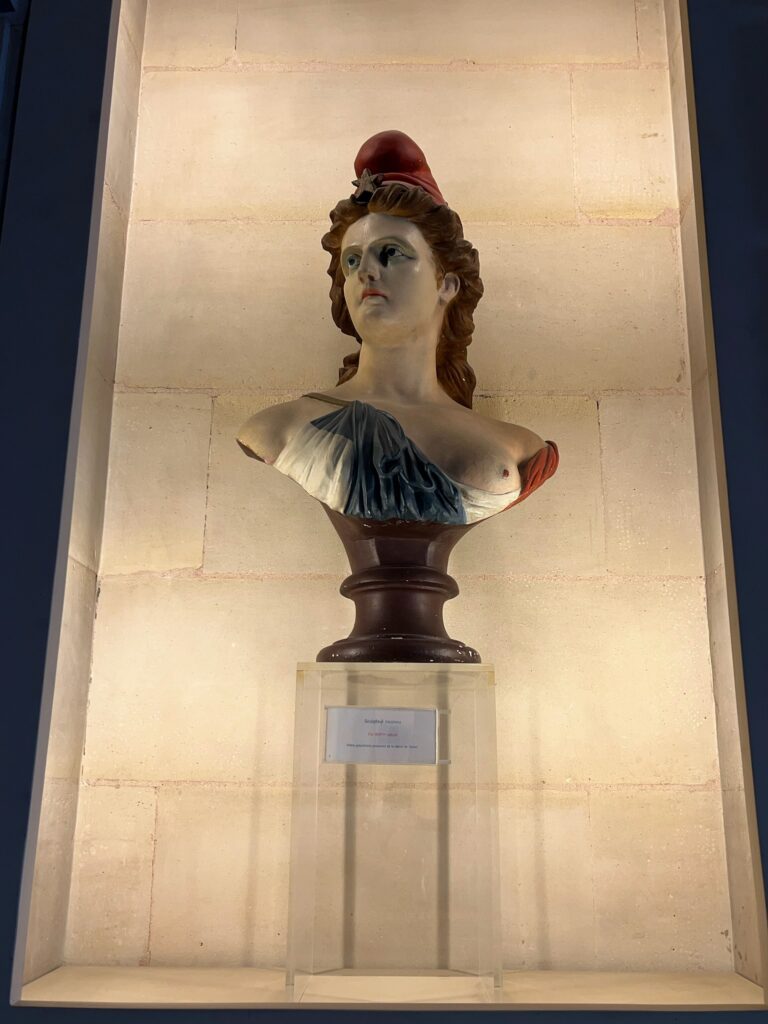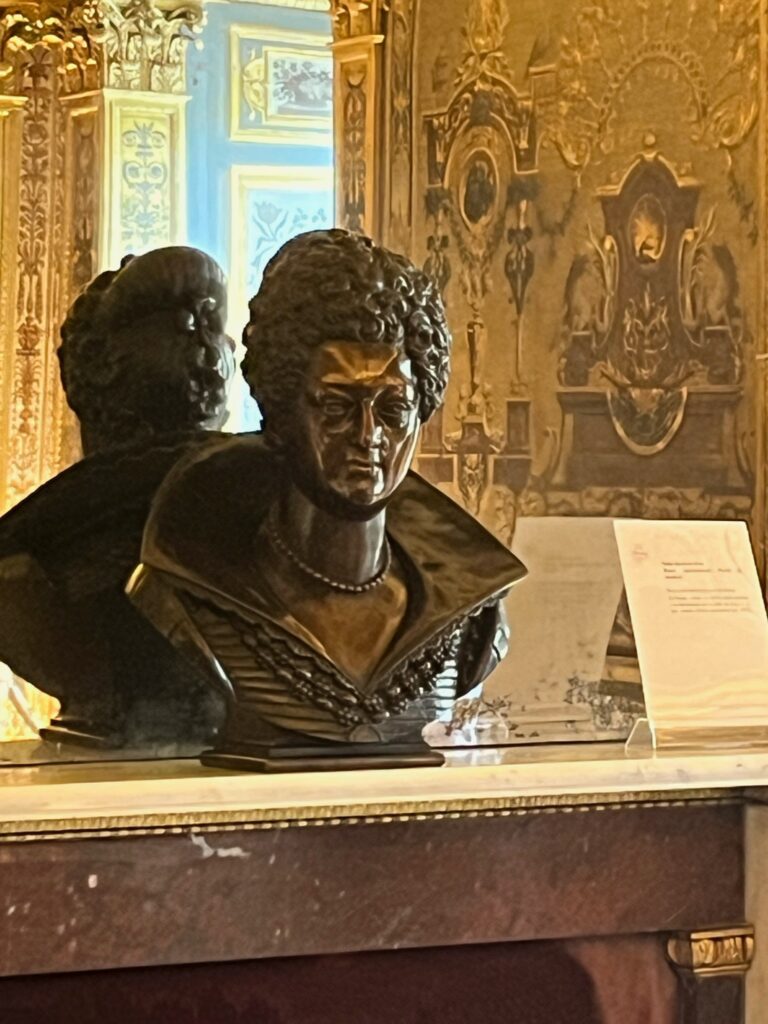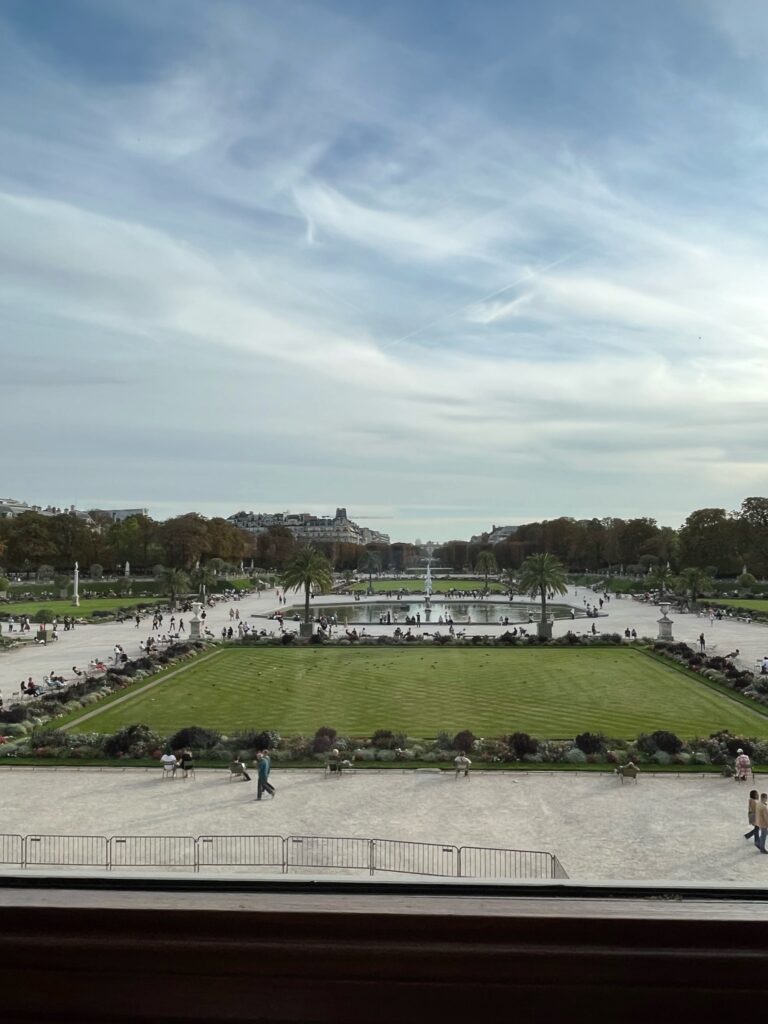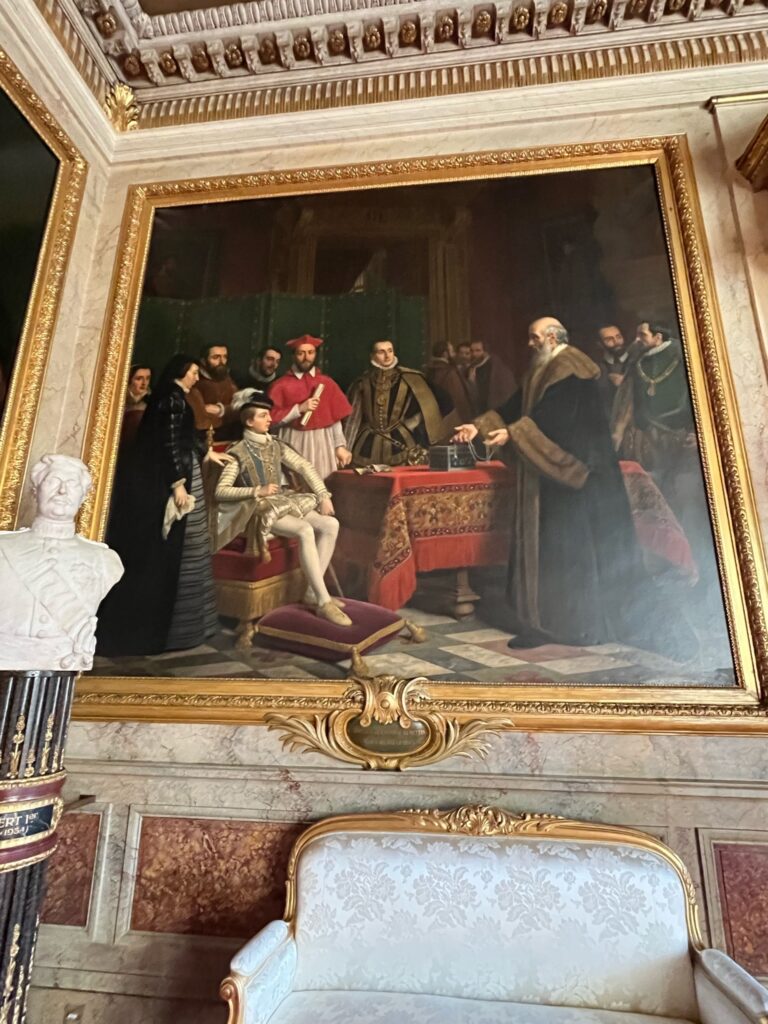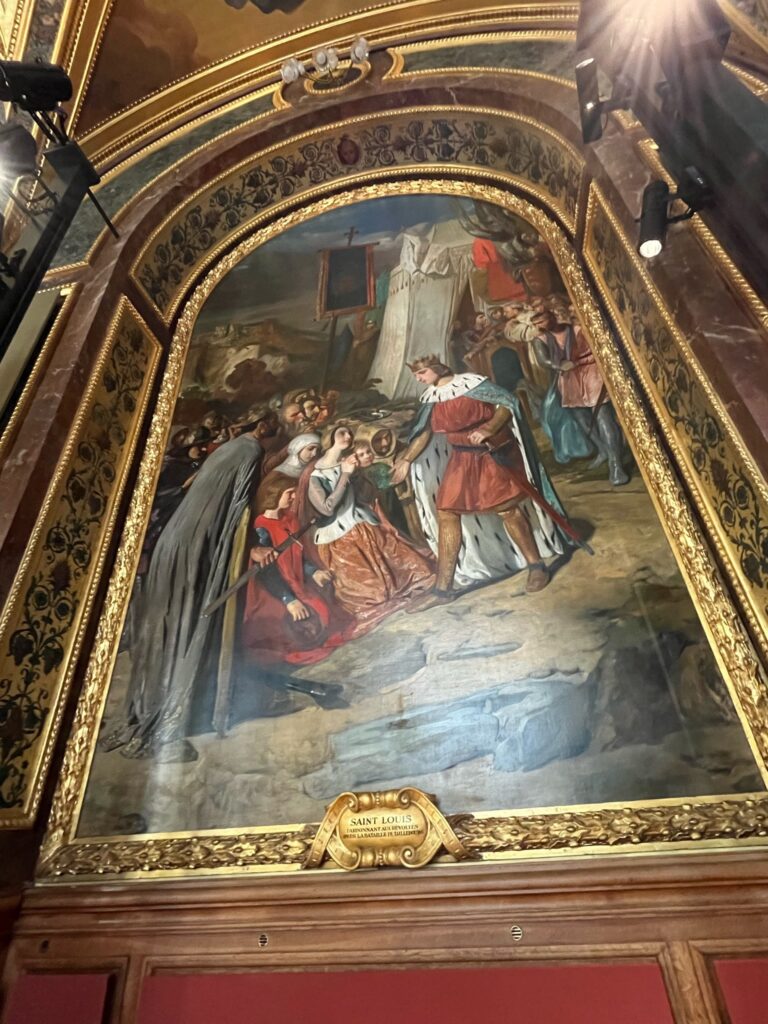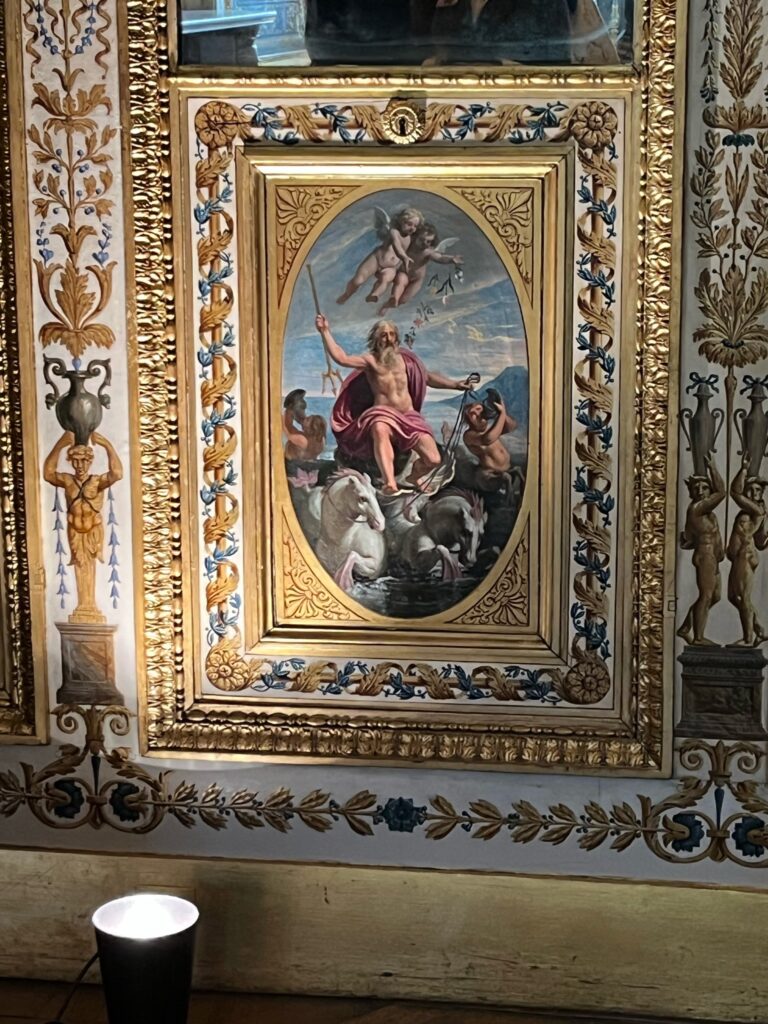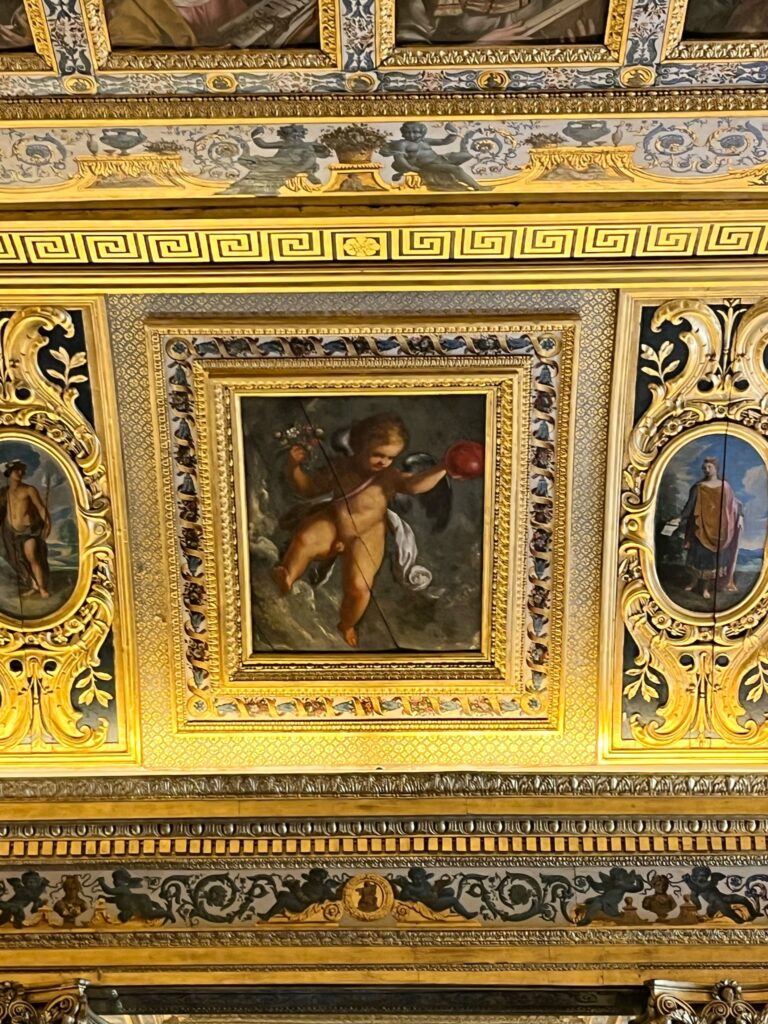In October 2023, we had a very special opportunity to visit Luxembourg Palace, an architectural gem housing the esteemed French Senate. This magnificent building, a testament to classical French design, exudes an aura of regal elegance and historical significance. Tours are privately arranged for small groups, and we were honored to be invited to visit. We are grateful to French-American Cultural Foundation board member Jacqui Michel for making our tour possible.
The palace was built in 1625 by Salomon de Brosse for Marie de Médici, mother of King Louis XIII. It served as a residence for the royal family before it was turned into a prison during the French Revolution.
Following the revolution, Luxembourg Palace was enlarged, remodeled, and turned into a legislative building. Since then, the building has been the seat of upper houses of French legislatures, and it has been home to the Senate of the Fifth Republic since 1958. The President of the Senate is the second most important person in the French government after the President, and 321 senators gather at the palace in “commissions” to analyze laws.
The façade of the senate building showcases quintessential elements of the French Renaissance style. Its symmetrical layout and harmonious proportions are complemented by the warm, honey-colored hue of the limestone walls.
At the entrance, visitors are greeted by a majestic double staircase. The interior of the palace seamlessly combines neoclassical elements with opulent decorative motifs. The senate chamber is a large semicircular room adorned with magnificent murals, intricate moldings, and a ceiling embellished with frescoes depicting pivotal moments in French history. Surrounding the chamber are salons and galleries, each adorned with period furniture, priceless artwork, and intricate tapestries.
The Senate Library contains approximately 450,000 books for legislators to study a variety of topics. Eugène Delacroix, a French Romantic artist regarded as the leader of the French Romantic school, was commissioned with decorating the library. He painted the presentation of Dante to Homer in the central dome, along with other notable men of Greek and Roman antiquity.
The Golden Book Room is the only remaining room that reflects the time when Marie de Médici occupied the palace. The room almost glows from its golden hue.
Our American group was particularly impressed by the statues placed throughout the building. Many of them did not have names displayed to recognize the person because, thanks to the emphasis on classical education in France, it is assumed that most citizens know the identities of the memorialized individuals.
The expansive gardens that envelop Luxembourg Palace also offer a serene and picturesque backdrop to this architectural masterpiece.
The Luxembourg Palace, with its timeless beauty and historical resonance, stands as a testament to France’s rich cultural legacy and continues to inspire awe and admiration among all who have the privilege of experiencing its grandeur firsthand.

